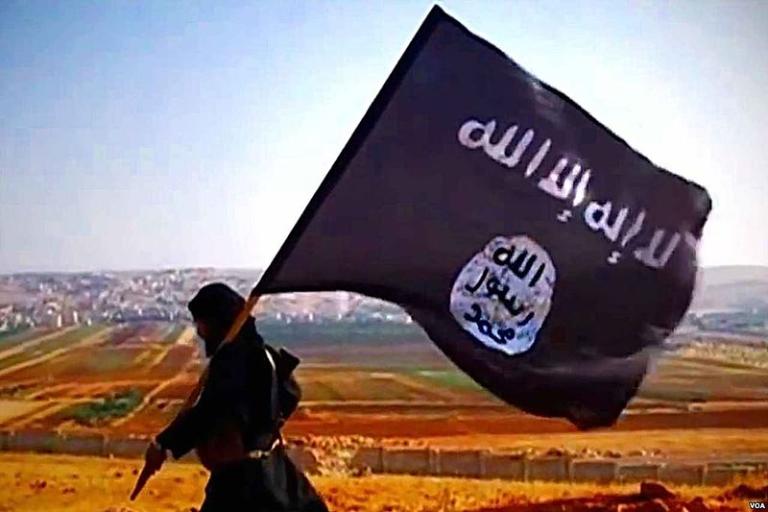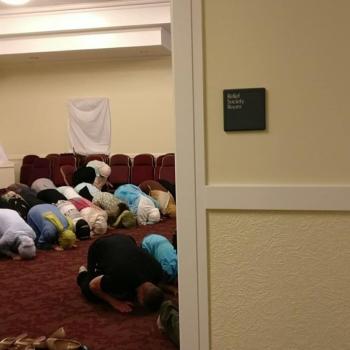
(Wikimedia Commons public domain)
William Hamblin and I published this column in the Deseret News back on 4 October 2014:
Amid the recent attention garnered by the barbaric cruelty and spectacular battlefield success of the Islamic State and its new caliphate (on which, see our previous column “Turning the clock back to the 7th century in Iraq?“), the sudden arrival on the scene of a new and very threatening terrorist group called “Khorasan” might easily be overlooked. (In fact, some commentators at nationalreview.com and carnegieendowment.org argue that, strictly speaking, “Khorasan” doesn’t even exist.)
Perhaps some explanation on the linguistic, theological and historical background behind these related organizations — if, indeed, there really are two of them — might be helpful, including a few words about names.
The White House commonly refers to the Islamic State as ISIL, while others call it ISIS. These are simply different translations of the same name, which in Arabic is “Al-Dawla al-Islamiyyah fi al-Iraq wa al-Sham.” The last element in that name, “al-Sham,” can be translated as “Syria” (hence, ISIS) but, properly speaking, it denotes not merely the modern nation-state of Syria (the Islamic State cares nothing for modern political borders) but the larger historical area of “Greater Syria” or, as it’s sometimes called, “the Levant” (hence, ISIL). The Arabic acronym for the Islamic State is actually neither ISIS nor ISIL, but — based upon the name’s Arabic spelling — “Da’esh.”
Modern political Syria’s interest in regaining its traditional scope is, incidentally, one of the factors behind the Asad regime’s hostility to Israel and its constant interference in neighboring Lebanon, which, as an independent country, is a modern creation imposed by European colonial powers.
But what of the Khorasan group? If it exists (which, in the murky world of Islamist terrorism, isn’t easy to determine), it’s thought to be a very small elite corps (perhaps fewer than 100 men) that might be compared to the U.S. Army’s Special Forces units or the Navy Seals. Classically, Khorasan denoted the region of modern Turkmenistan, Afghanistan, Pakistan and eastern Iran (essentially the area known even more anciently as “Parthia”), located on the eastern margins of the early Islamic empire.
But the leaders of the alleged Khorasan group come from Kuwait, Syria and Yemen, not from Khorasan. So why the name?
If you’ve seen images of ISIS warriors cruising in caravans down major roads (before U.S. bombing raids, well telegraphed in advance, were launched against them) or of triumphant ISIS fighters standing over rows of executed captives, you’ve seen their black flags, inscribed in Arabic with the essentials of the Islamic testimony or profession of faith: “There is no god but God” and “Muhammad is the Messenger of God.”
This is a clue.
It’s said that the Prophet Muhammad flew a black battle flag, and that Ali, his cousin and son-in-law and the last of the four “orthodox” caliphs who succeeded him, also went to war under such a flag.
In the 740s, the Abbasid revolution overturned the corrupt and increasingly ineffective Umayyad Dynasty that had ruled the entire empire from Damascus. One of the most successful revolutions in pre-modern history, it commenced among disaffected non-Arab Muslims in the extreme east of the Islamic world — in Khorasan — and its fighters were called “musawwids” (roughly, “the black-bearers”) because they marched westward under a black banner (the “rayat al-sawda”). It was probably at about this time that a “prophecy” of Muhammad was set into circulation, predicting that the Mahdi, the apocalyptic figure expected by both Sunni and Shiite Muslims in the last days, would arrive accompanied by “black standards” from the East.
Since at least 2001, black banners have commonly appeared on jihadist websites and among members of al-Qaida, Somalia’s al-Shabaab and Hizbul Islam, and the Islamic State in Iraq and Syria.
Finally, if you’ve seen that black flag, you may also have noticed ISIS fighters gathered around it with their index fingers pointing skyward. They’re not boasting, in Western style, “We’re Number One.” Instead, they’re indicating their allegiance to the Islamic principle of “tawheed” or “making/declaring One.” In its most basic sense, “tawheed” refers to the Islamic principle of absolute monotheism (again, “There is no god but God”).
The worst sin in Islam is that of “shirk” or, roughly “polytheism,” and Muslims have historically regarded (and rejected) even Trinitarian Christianity as polytheistic heresy. Those single extended fingers indicate a rigid commitment to monotheism, and perhaps help to explain the Islamic State’s brutally harsh treatment of Middle Eastern Christians. However, the gesture also seems to represent ISIS’s vision of one global Islamic State, wholly subservient to that One God — and to one universal earthly caliph.
It seems that the “Islamic State” may be on its last legs as a holder of territory. At least, for the time being. It is, however, nowhere near done as an idea and a threat. We should not be complacent on that score.












